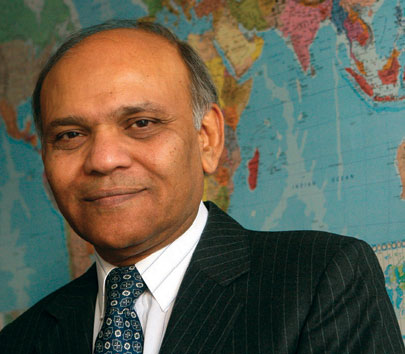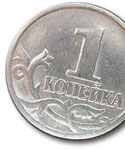By Jonathan Monpetit
Dispelling myths about the developing world’s economies

When The Economist declared last year that no serious investor can afford to ignore emerging markets (EMs), Professor Vihang Errunza bit his tongue.
For more than 30 years, Errunza has been preaching about the opportunities afforded by developing world economies. In fact, his 1974 doctoral thesis was among the first to broach the idea that perhaps investing in countries like China and India wasn’t so crazy after all.
“I came up with the very simple idea that to have portfolio capital flowing from developed economies to emerging markets would be beneficial to both sides,” says Errunza, a professor in the Desautels Faculty of Management. “The developed countries share in the growth prospects of these emerging markets. The emerging markets, in turn, get a much-needed additional source of risk capital, which helps develop local institutions, increases their economic growth rate and lowers the cost of capital.”
Errunza isn’t surprised that three decades of thinking about EMs has suddenly come to a head. Aging populations and low growth rates mean the world’s developed markets no longer present the lucrative growth opportunities they once did. At the same time, consumers and suppliers in the developing world are chomping at the bit; Errunza estimates that EMs—particularly the “BRIC” countries (Brazil, Russia, India, China)—will account for 50 per cent of the global economy within the next 25 years. BRIC markets are also proving rather responsive to the environmental warning bells, exploring renewable energy sources such as wind (India) and solar (China) power. “In the long run, it’s in everybody’s best interests to have these economies grow and become part of mainstream global capital markets.”
But while Errunza is credited with helping kick-start the trend toward EMs, he hasn’t rested on his laurels. He recently completed a major research project that furthers his 1985 study on international asset management, which established a pricing model for emerging market securities.

The 1985 study, which has since become required reading in many PhD programs, established empirically what has been one of the long-running themes of Errunza’s research: although EMs can be volatile over the short term, they offer significant returns to patient investors. Errunza’s new project doesn’t only take into account the traditional barriers faced by EM investors, but also seeks to explain the risk posed by fluctuating exchange rates.
The authority Errunza enjoys on the topic comes from having been able to provide the financial community with reliable statistics and models for understanding the potential of emerging market economies. In the early 1980s, for example, he played a lead role in developing the World Bank’s first EM database.
The database has since been sold to Standard and Poor’s, and is an integral tool for fund managers.
By the 1990s, country funds and American depository receipts (ADRs) had become popular, as investors looked to diversify their portfolios with offerings from abroad. Globalization was kicking into high gear, and the dapper management professor from Mumbai had played a quiet but important role in opening up the world’s markets. “A lot of people that never used to invest in the market have since become stock market investors,” he says from his corner office in the Bronfman Building.
Of course, overturning investment orthodoxies doesn’t happen without a fight, and many have expressed fears that the rise of EMs spells doom for North American jobs. But Errunza brushes aside such fears, insisting that the Canadian economy needs the competition. “The fact is we have to have innovation,” he stresses. “If we don’t have innovation we’re going to be relegated to a second-rate power status in tomorrow’s world.”
Errunza calls the concern over outsourcing “bogus” because it fails to address the real issues that face our economy, mainly its ability to adapt to new challenges. Indeed, what Errunza credits for his own success mirrors in many ways the findings of his research. “You have to challenge, if you don’t challenge you won’t go very far,” he says. “You must learn continuously, you must innovate continuously and keep challenging.”
Vihang Errunza is the Bank of Montreal Chair in Finance and Banking, and Associate Dean for Research and International Relations in the Desautels Faculty of Management.
